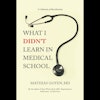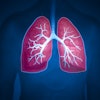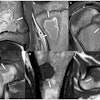
Radiology today is integral to modern-day patient care. But do patients understand the significance of the report that is produced and that it is a medical opinion? Do they understand the importance of a high-quality radiology report as compared with a mediocre one, even if the diagnosis is the same? Our columnist Dr. Neelam Dugar discusses the rights of patients to have radiology reports prepared with the highest quality standards.
Radiology reports are medical acts, performed by medically qualified personnel, namely radiologists. Radiology reports reflect opinions expressed by radiologists based on the findings of medical images, clinical history provided, previous imaging review, and laboratory results that are made available. They also can include recommendations about further management of the patient when this is appropriate, including further investigations or referral to another specialty.
 Dr. Neelam Dugar is a consultant radiologist at Doncaster Royal Infirmary, U.K., and former chair of the Royal College of Radiologists' Imaging Informatics Group.
Dr. Neelam Dugar is a consultant radiologist at Doncaster Royal Infirmary, U.K., and former chair of the Royal College of Radiologists' Imaging Informatics Group.
Patients often do not understand the role of the doctor behind the interpretation of images by scan providers. Their clinical contact is usually limited to radiographers. Radiographers should be required to inform the patient about the qualifications of the radiologist reporting their images, where they are based, and whether they are employed by the provider organization or a member of a contracted teleradiology service provider. They also should be advised as part of the consent process as to how to submit a complaint.
While it is unlikely that patients will see the radiology reports prepared for them, their physicians will. An accurate diagnosis conveyed in a report meeting high-quality standards should always be the output of the interpreting radiologists.
Elements of radiology report quality
The radiology report should be clear, complete, and comprehensive. It should be possible to read and understand the report without needing to refer to any diagnostic images. The language and terms used should be understandable by the referring doctor and, ideally, tailored to the needs and expectations of the medical specialty of the ordering physician.
The report should clearly answer the clinical question on the request card. It should not be evasive or filled with self-serving qualifying statements.
When an abnormality is seen on the images, the report must include a tentative or differential diagnosis. It must include advice on further appropriate investigations, whether radiological or nonradiological, as well as advice on further management or referral to an appropriate specialty.
The report should also contain a direct telephone number with voice mail or attached to an answering machine, and/or a direct secure email address, to enable the recipient physician to contact the radiologist.
A high-quality report can make a huge difference as to how patients are managed. The report can help prevent delays in patient management or inappropriate clinical investigations. It will also ensure a smooth pathway of care.
Factors on which radiology report quality depends
There are three cornerstones for radiology report quality: qualifications and training, subspecialization, and access to clinical information.
Medically qualified physicians with further qualifications in radiology image interpretation usually provide radiology reports. This may vary depending upon country and type of modality used. In the U.K., use of nonmedically qualified reporters is now common practice for ultrasound exams. However, in Australia, all sonographer-performed ultrasound is reported by radiologists.
Increasingly, reports by body part are prepared by experienced specialists, such as breast imaging experts and neuroradiologists. While subspecialization can lead to fragmentation of care for an individual patient, participation by radiologists in weekly multidisciplinary meetings will help ensure that patients receive personalized care. Multidisciplinary team working also allows for radiologists to get feedback from their reports, which is essential for maintaining their own quality.
However, specialists should work in radiology teams as well. They should be able to cross refer and take advice on areas that are outside their own areas of interest.
Access to clinical information is critical for radiologists. At a minimum, the radiologist should be provided with a summary of a patient's clinical history and the clinical question should be stated clearly. If the information is inadequate or unclear, the radiologist should be able to contact the referring doctor with ease.
Previous radiological images and reports must be available to a reporting radiologist on the PACS used for reporting. This can include imported images from an externally provided DICOM CD.
Access to recent blood tests, histopathology, and microscopy must be available via a single mouse click from the RIS/PACS. This is essential for radiologists to give good-quality tentative and differential diagnoses so that appropriate investigations can take place.
Emergency radiology
Emergency radiology needs to emerge as a subspecialty interest in radiology. Radiologists who practice emergency radiology must be trained and skilled in all of its aspects. Emergency radiologists should have competence in interpreting images of head, chest, abdomen, spine, and limb-related emergencies.
They also must refer for a second opinion to be documented by a special interest radiologist, when a cancer or other abnormal finding not directly associated with the emergency procedure is detected. This is an essential part of teamwork among radiologists.
Communication and audits
With medicine becoming hugely complex, subspecialization has become inevitable for maintaining quality. However, the downside of subspecialization is clinical care fragmentation, which could lead to poor patient management.
It is well-recognized that face-to-face communication is the best form of communication, but this can be supplemented by audio, video, and written communication, including electronic communication. However, radiologists must be accessible to the ordering physician of an exam, the patient's medical team, and even the patient himself. Surveys are an excellent method of determining how satisfied the ultimate users of a radiology report are with regard to this.
Similarly, a radiology department should conduct periodic audits of the quality of radiology reports. This should be done through self-auditing, peer review, and surveys of referring physicians. Questions that should be asked of ordering physicians include if the report can be read and understood in isolation of the images, the language and terms used are understandable, it answers the clinical question, the radiologist was easy to contact, and an abnormality was identified if enough appropriate information was provided.
Teleradiology
Teleradiology provider services should be held to the same standards of report quality as onsite radiologists. Because regulations may not be in place that are comparable to the regulations enforced locally, it is imperative that accurate and high-quality reporting be obtained and also that these reports be audited.
It is frequently stated that the professional service provided by a radiologist is making an accurate diagnosis, as well as the report prepared about the interpretation of the exam. What also should be stated is that radiologists are obligated to produce reports of the highest possible quality. After all, patients' lives depend upon this.
Dr. Neelam Dugar is consultant radiologist at Doncaster Royal Infirmary, U.K., and former chair of the Royal College of Radiologists' Imaging Informatics Group.
The comments and observations expressed herein do not necessarily reflect the opinions of AuntMinnieEurope.com, nor should they be construed as an endorsement or admonishment of any particular vendor, analyst, industry consultant, or consulting group.



















